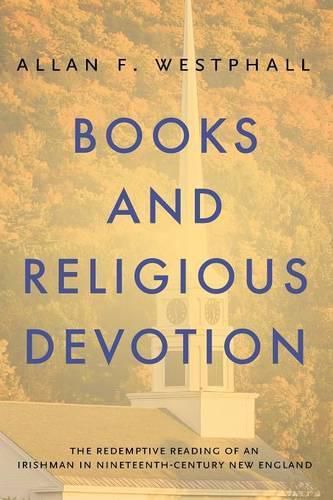Readings Newsletter
Become a Readings Member to make your shopping experience even easier.
Sign in or sign up for free!
You’re not far away from qualifying for FREE standard shipping within Australia
You’ve qualified for FREE standard shipping within Australia
The cart is loading…






In Books and Religious Devotion, Allan Westphall presents a study of the book-collecting habits and annotation practices of Thomas Connary, an Irish immigrant farmer who lived in New Hampshire in the latter half of the nineteenth century. Connary led a pious life that revolved around the use, annotation, and sharing of religious books. His surviving annotated volumes provide a revealing glimpse into the utility of books for a common reader-and they show how one remarkable, eccentric reader turned religious books into near icons. Through a careful excavation of book adaptations and enhancements, Westphall gives us insight into the range of opportunities provided by the material book for recording and communicating Connary’s religious fervor. The study also investigates the broader nineteenth-century cultural setting, in which books are seen as testimonies of personal faith and come to function as instruments of social interaction in both domestic and public spheres. Underlying Connary’s many and varied interactions with books is his belief that working in books, as physical objects, can be a devout exercise instrumental in human salvation.
$9.00 standard shipping within Australia
FREE standard shipping within Australia for orders over $100.00
Express & International shipping calculated at checkout
In Books and Religious Devotion, Allan Westphall presents a study of the book-collecting habits and annotation practices of Thomas Connary, an Irish immigrant farmer who lived in New Hampshire in the latter half of the nineteenth century. Connary led a pious life that revolved around the use, annotation, and sharing of religious books. His surviving annotated volumes provide a revealing glimpse into the utility of books for a common reader-and they show how one remarkable, eccentric reader turned religious books into near icons. Through a careful excavation of book adaptations and enhancements, Westphall gives us insight into the range of opportunities provided by the material book for recording and communicating Connary’s religious fervor. The study also investigates the broader nineteenth-century cultural setting, in which books are seen as testimonies of personal faith and come to function as instruments of social interaction in both domestic and public spheres. Underlying Connary’s many and varied interactions with books is his belief that working in books, as physical objects, can be a devout exercise instrumental in human salvation.